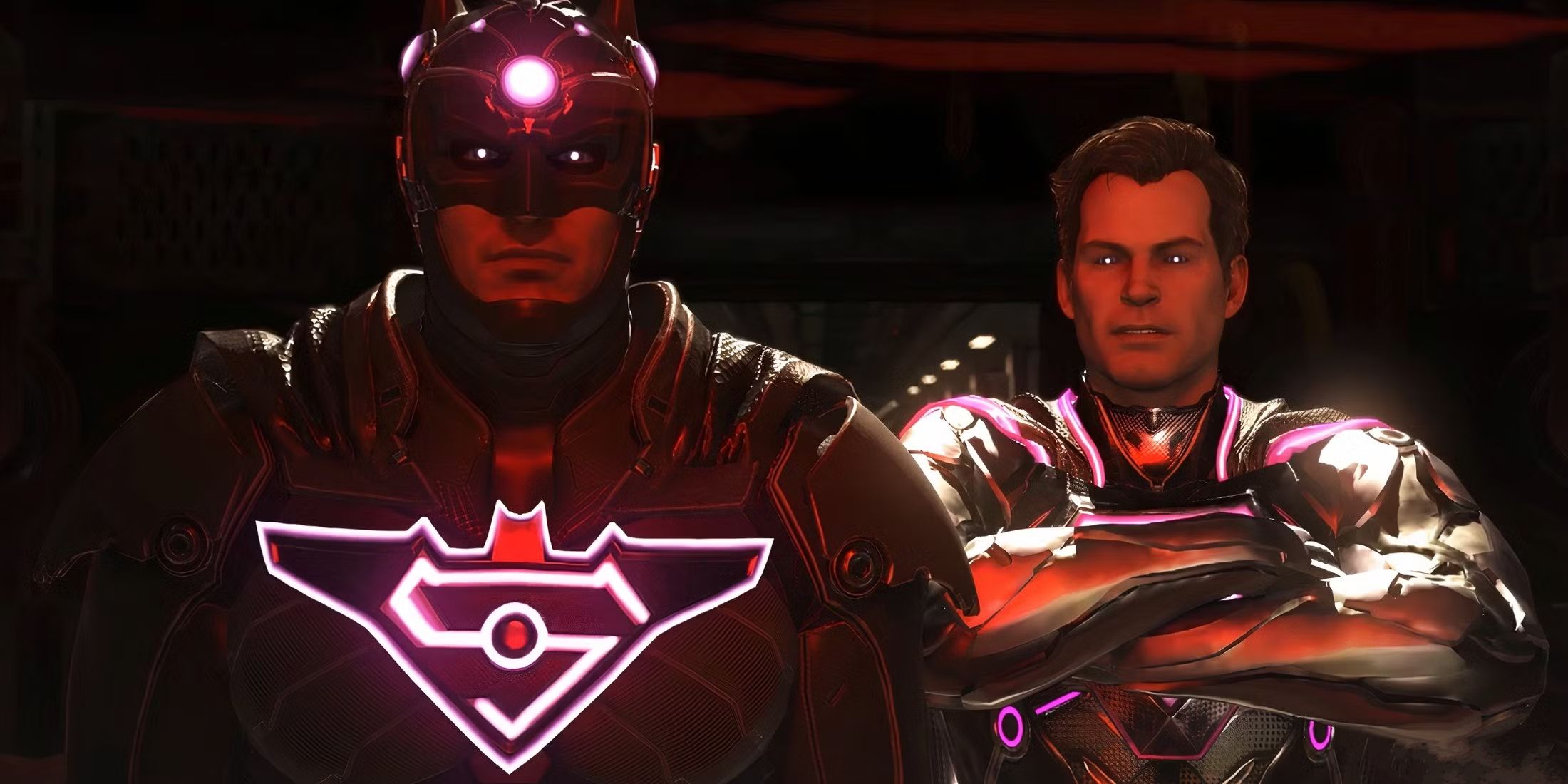[[{“value”:”
Injustice 3 is still a ways off, with developer NetherRealm completely silent on any third entry to the superhero fighting franchise. Fans have been waiting patiently since the release of Injustice 2 to see how the story concludes, with two possible endings currently being canon for the game’s story mode. Injustice 2‘s good ending sees Batman, Supergirl, and company imprisoning the evil Regime heroes in the Negative Zone. In contrast, the evil ending turns Injustice into the darkest timeline with Regime Superman using Brainiac’s mind control tech to enslave Batman and presumably anyone else who’d stand in the way of his rule.
With two radically different canon possibilities, Injustice 3 can go in just about any direction the developers want regarding the narrative. A unique benefit the Injustice franchise has over its peers in the fighting game genre is its source material. Comics have decades upon decades of stories to derive inspiration. Some are certainly better than others, but the best comic stories are among the most solid foundations for a gripping video game, and no comic arc fits the bill better than one 2013-2014 crossover event from DC.
Related
Why an Injustice Reboot Might Actually Be a Best Case Scenario
The length of time between Injustice 2 and now has given NetherRealm’s DC Universe series a chance to hop on the reboot bandwagon.
Forever Evil was a major crossover event wherein the Justice League was believed dead and replaced by similar heroes from an alternate reality. But these doppelgangers were a cabal of villains known as the Crime Syndicate and, with the League indisposed, the only defense the world had was from the most unlikely of places; the DC universe’s strongest villains. Lex Luthor, Black Manta, Solomon Grundy, Bane, Catwoman, Sinestro, and more all come together to channel their best (and worst) impulses at the League’s evil counterparts. Ultimately, they buy enough time for the proper Justice League to return and reestablish the status quo.
Injustice Already Borrows a Lot From Forever Evil
If this sounds vaguely familiar to Injustice fans, it absolutely should. Forever Evil already shares a lot of DNA with the Injustice story. Evil League members from an alternate reality, a Lex Luthor willing to be benevolent to stop an evil Superman, and unlikely allies banding together to stop a much bigger threat are all core tent poles of the game’s story. Despite the surface-level similarities, it’s unlikely Injustice: Gods Among Us knowingly took any cues from Forever Evil as the game came out in 2013, the same year the comic arc began. But Injustice 3 should lean into the comics storyline much more.
If NetherRealm decides to continue with the good ending of the second game, bringing back Superman and the Regime would be a little old hat. By introducing the Crime Syndicate, they could keep the evil Justice League trope without constantly retreading old ground with the (now irredeemably evil) Regime Superman and Wonder Woman.
Conversely, Forever Evil touched all corners of the DC Universe. Injustice 3 taking cues from the story line could lead to some fairly inspired character additions. Key characters from the comic event have either been largely forgotten by the series or haven’t been included in story material for either game.
Major Forever Evil Characters That Could Appear in Injustice 3’s Story
Giganta
Deathstroke
Trickster
Copperhead
Sinestro
Bizarro
Black Manta
Forever Evil was one of the most successful stories of the New 52 era of DC comics, but it has gotten sparse attention outside its original medium. LEGO game fans will recognize the broad strokes of the story from LEGO DC Supervillains, but that remains the only major adaptation of the arc to date. NetherRealm is sitting on one of the best comic stories of the last decade and incorporating elements of it into Injustice 3 would be one of the smartest things the developers could do.
“}]] Injustice 3 has a lot of directions it can take with its story, but NetherRealm would be smart to look to one of the best DC arcs in recent memory. Read More

